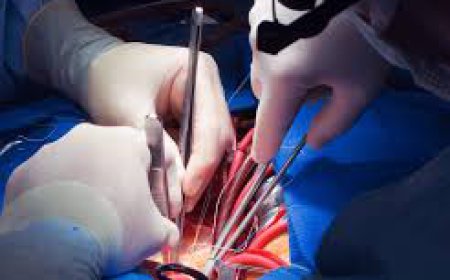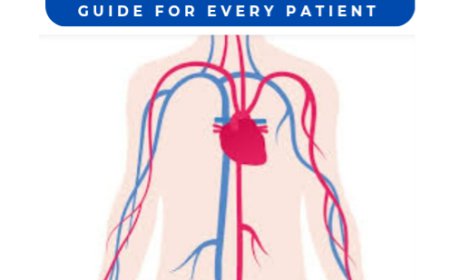Orientation Handbook for New Surgical Nurses
Orientation Handbook for New Surgical Nurses by Dr. Dhiren Shah

Orientation Handbook for New Surgical Nurses
Operating Theatre (OT) – Cardiac Surgery Unit by Dr. Dhiren Shah, Marengo Asia CIMS Hospital
Welcome to the OT Team
Congratulations on joining the surgical team!
As a cardiac OT nurse, you are now part of a high-performance environment where every second counts and every action matters. This orientation handbook will guide you through what is expected, how to prepare, how to anticipate, and how to evolve into a confident, efficient, and reliable OT nurse.
Core Responsibilities of a Cardiac OT Nurse
-
Pre-operative preparation
-
Assisting during surgery
-
Maintaining sterility and safety
-
Post-operative support
-
Documentation and communication
-
Equipment care and inventory
I. Preparing for the Case: Before the Patient Arrives
Understand the Surgery
-
Know the procedure type (e.g., CABG, valve replacement, aortic dissection, transplant)
-
Review the surgical plan and patient history (ask seniors if unsure)
Prepare the OT
-
Check lights, suction, cautery, ECG, warming equipment, heart-lung machine interface
-
Prepare surgical trays, sutures, drapes, prosthetic valves, and implants
-
Verify that all implants and devices are sterilized and within expiry
-
Ensure emergency kits (crash cart, defibrillator) are stocked and accessible
Communicate
-
Confirm case timing with surgeon, anesthetist, perfusionist
-
Update whiteboard or electronic board with case information
II. Assisting During Surgery
Your Role at the Table
-
Be alert and ready with instruments before the surgeon requests them
-
Anticipate needs: suction, clamps, gauze, needles, cannulas, grafts, etc.
-
Ensure constant sterile field and quick access to instruments
Communicate Clearly
-
Respond with confidence (“Yes doctor”, “Suction ready”, “Pledget coming”)
-
If unsure, don’t guess—clarify silently or discreetly
Count Matters
-
Instrument, gauze, and sharps count at the start, before closure, and end
-
Ensure proper documentation of counts with the circulating nurse
III. Sterility and Infection Control
-
Follow WHO five moments of hand hygiene
-
Maintain strict sterile technique throughout
-
Report any suspected contamination immediately
-
Keep surgical field clean, dry, and protected at all times
IV. Post-Surgery Duties
-
Assist with dressing, drain securing, and line management
-
Help anesthetist and ICU staff with transfer documentation
-
Clean and sterilize instruments as per hospital protocol
-
Replenish sutures, blades, and emergency stock used during surgery
V. Communication Protocols
-
Brief incoming nurse (handover) clearly on patient’s condition and any intra-op events
-
Maintain professionalism and calm tone at all times, especially with families and surgeons
-
Ask for feedback after each case—use it to improve and grow
VI. Emergencies in the OT
In cardiac surgery, emergencies can escalate in seconds.
Your Actions:
-
Stay calm, do not panic
-
Retrieve required items: sternal saw, crash drugs, defibrillator pads
-
Increase suction or adjust lights as requested
-
Communicate briefly and clearly
VII. Daily Personal Readiness Checklist
Before you begin each day:
✅ Nails trimmed, no polish
✅ Freshly laundered scrubs
✅ OT badge and ID visible
✅ Watch for timing medication
✅ Good hydration, alert mind
✅ Positive attitude
VIII. Key Qualities of an Excellent OT Nurse
-
Preparedness – You know the case and the surgeon's preferences
-
Anticipation – You think two steps ahead
-
Discipline – You maintain sterile field and calm presence
-
Responsiveness – You listen, acknowledge, and act promptly
-
Emotional Strength – You stay calm under pressure
-
Team Spirit – You support your surgeon, anesthetist, and fellow nurses equally
IX. Respect, Teamwork, and Culture
-
Respect patient dignity always—before, during, and after surgery
-
Encourage a culture of silence, focus, and professionalism in the OT
-
Handle instruments with care and purpose—not casually
-
Build trust with the surgeon by being consistent, humble, and proactive
X. Final Thoughts – You Are the Backbone of the OT
“A surgeon can only do his best when the nurse knows what’s needed before it’s said.”
– Dr. Dhiren Shah
You are not “just assisting.” You are a critical part of saving a life. Every suture you pass, every sponge you count, and every moment you stay alert contributes to a successful outcome.
Wear your scrubs with pride. You are not just a nurse—you are a lifesaver.
What's Your Reaction?
 Like
0
Like
0
 Dislike
0
Dislike
0
 Love
0
Love
0
 Funny
0
Funny
0
 Angry
0
Angry
0
 Sad
0
Sad
0
 Wow
0
Wow
0
























